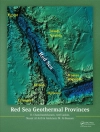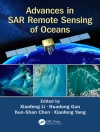The ocean plays a central role in determining the climate of the earth. The oceanic circulation largely controls the temporal evolution of cli- mate changes resulting from human activities such as the increase of greenhouse gases in the atmosphere, and also affects the magnitude and regional distribution of those changes. On interannual and longer time scales the ocean is, through its interaction with the atmosphere, a source of important natural climate variations which we are only now beginning to recognise but whose cause has yet to be properly determined. Chem- ical and biological processes in the ocean are linked to climate change, particularly through interaction with the global carbon cycle. A quantitative understanding of the oceanic role in the climate system requires models which include many complex processes and interactions, and which are systematically verified with observations. This is the ob- jective of global research programs such as TOGA, WOCE, and JGOFS. Coupled numerical models of the oceanic and atmospheric circulation constitute the basis of every climate simulation. Increasingly it is recog- nized that in addition a biological/chemical component is necessary to capture the pathways of carbon and other trace gases. The development of such coupled models is a challenging task which needs scientists who must be cognizant of several other disciplines beyond their own specialty.
David L.T. Anderson & Jurgen Willebrand
Modelling Oceanic Climate Interactions [PDF ebook]
Modelling Oceanic Climate Interactions [PDF ebook]
Mua cuốn sách điện tử này và nhận thêm 1 cuốn MIỄN PHÍ!
Ngôn ngữ Anh ● định dạng PDF ● ISBN 9783642849756 ● Biên tập viên David L.T. Anderson & Jurgen Willebrand ● Nhà xuất bản Springer Berlin Heidelberg ● Được phát hành 2013 ● Có thể tải xuống 3 lần ● Tiền tệ EUR ● TÔI 6335094 ● Sao chép bảo vệ Adobe DRM
Yêu cầu trình đọc ebook có khả năng DRM












